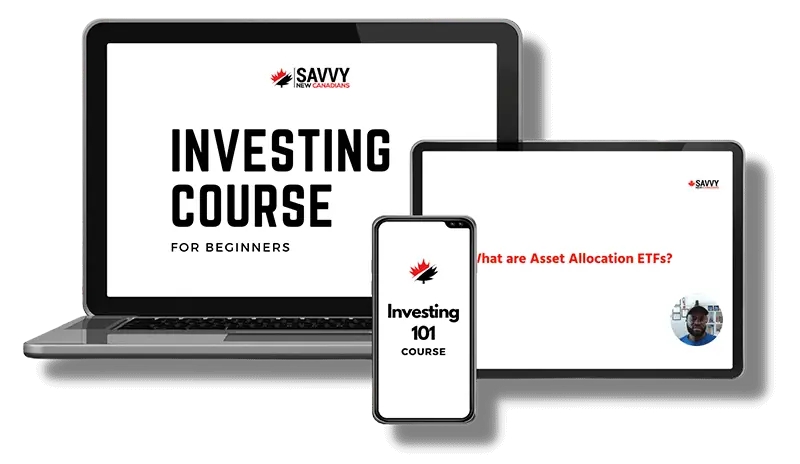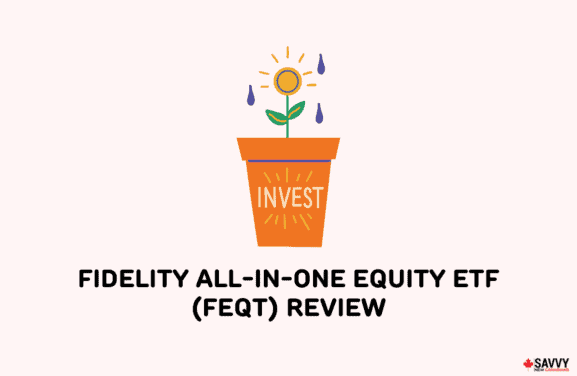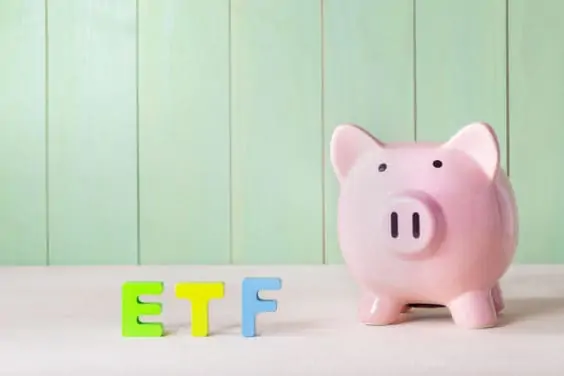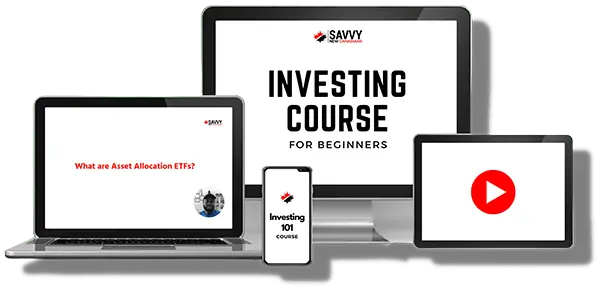A mutual fund is a collection of investment assets such as bonds, stocks, ETFs, other mutual funds, cash, and other securities owned by a group of investors and managed by a professional fund manager.
Mutual funds have been North America’s most popular investment vehicle for decades. However, since having to compete with ETFs, which have seen increasing adoption and usage by investors (millennials in particular), mutual funds have experienced a significant outflow of funds yearly.
As of the end of the third quarter in 2023, Canadians held $1.836 trillion in mutual fund assets. In the same period, ETF assets increased to $346.5 billion.
Types of Mutual Funds
There are a variety of mutual fund types designed to cater to different levels of risk tolerance, investment objectives and strategies, time horizon, and the investor’s need for regular income, capital growth, or preservation.
The different types of mutual funds include:
Money Market Funds
These invest in short-term money-market debt securities (less than 1 year) like treasury bills, commercial paper, and bankers’ acceptances that are very low risk.
They cater to investors who want to preserve their capital, park their investments in a short-term, highly liquid asset while earning a higher interest rate than a savings account, save towards a short-term goal, or desire regular interest income.
Money market funds are low-risk, and expected returns are lower than for bond or equity funds.
Fixed-Income Funds
These funds invest in government or corporate bonds (bond funds), preferred stocks (dividend funds), or mortgages (mortgage funds).
Fixed-income mutual funds offer investors an opportunity to generate a steady income stream while preserving capital. They are considered to be less risky than equity funds, and potential returns are higher than for money-market funds.
Equity Funds
These funds invest in the stocks (shares) of publicly traded companies in Canada, the U.S., and internationally. Depending on the investment strategy of the fund, it may invest in only blue-chip companies, value companies, small-to-medium capitalization companies, specific sectors, etc.
Equity funds offer investors capital appreciation and the potential of higher returns than is available through other asset classes. A higher level of risk is generally assumed by investing in stocks (equities).
The more “growth-oriented” or “aggressive” an equity mutual fund is, the higher the risk exposure and potential for higher returns.
Balanced Funds
These funds hold a combination of equities, fixed-income, and money-market assets. They are designed to offer both capital growth potential and income.
A typical balanced fund holds equity to fixed-income/money-market assets in a ratio that is anywhere from 40:60 to 60:40. Depending on market conditions and fund objectives, the fund manager may adjust asset weightings as required.
Balanced funds help investors to hold a diversified portfolio that offers safety, income, and capital appreciation.
Here’s How Mutual Funds Work
Mutual funds pool money from several investors who then own units of the portfolio based on their share of the overall fund.
The investments held in the fund portfolio are chosen and managed by a fund manager who manages the fund based on specified investment objectives and strategies.
Traditional mutual funds are open-ended, meaning that new investors are welcome to join, and new shares or units are issued as more money flows into the fund.
The value of individual units (shares) of a mutual fund is calculated at the close of each business day and is referred to as the Net Asset Value (NAV).
The NAV per unit is based on the value of the assets held by the mutual fund and is calculated by dividing the mutual fund’s net asset value (i.e. assets-liabilities) by the number of outstanding units/shares.
The NAV per unit is what new investors pay to own units of the fund and what current unitholders receive when they switch or redeem units.
Net Asset Value Example: If a mutual fund has assets worth $120 million, $20 million in liabilities, and 5 million outstanding units (shares).
NAV = (Assets – Liabilities) = $(120 – 20) million = $100 million
NAV per unit (share) = $100 million/5 million units = $20
As the value of the assets held by a mutual fund rise and fall, the NAV will also change.
Benefits of Mutual Funds
By pooling money, mutual funds give investors access to owning investments they may otherwise be unable to afford. Other benefits that mutual funds offer to investors include:
Diversification: It is easier to diversify your portfolio when you hold a mutual fund that is already diversified by holding assets across classes, regions, sectors, or industries. Diversification lowers your investment risk while potentially increasing your returns.
Professional Management: You get access to world-class fund managers who are trained to pick investments, research, buy, sell, or rebalance as required. Investors who do not have the time, confidence, money, or investment know-how to DIY their investing will benefit from the mostly hands-off approach mutual funds require.
Note: Although mutual fund managers actively try to beat the market or their benchmark index, they do not always achieve this feat.
Liquidity: Most mutual funds are liquid and are easy to buy or sell whenever you want to. If you need to cash out, you can have your money back in your bank account in just a few days.
Variety and Flexibility: There are literally thousands of mutual funds available to investors. Based on your risk tolerance, expected returns, and investment objectives, you can select funds that better suit your financial needs.
Small Initial and Ongoing Investment: You can own units of a diversified mutual fund with just a little initial investment – usually as little as $500. Most mutual funds also allow for periodic purchases via a pre-authorized purchase plan that allows you to purchase shares with even less money – often as low as $25 per fund.
Mutual Fund Series or Classes
Mutual fund companies may categorize funds using letters that denote different series which have different target investors or fee structures. The letter designations are not uniform and vary from company to company. Some of the common designations include:
Series A
The fund is designed for retail investors (everyday investors) and is sold by a financial advisor. They usually include trailing fees paid to advisors and may also come with a back-end load.
Series B and C
These are not as common but are similar to Series A mutual funds, and have a back-end load (also known as deferred sales charge), which is waived if an investor holds the fund long enough. For example, for a year or longer.
Series D
Are funds designed for DIY or self-directed investors who purchase them via a discount brokerage account and who are not looking for customized advice from a financial advisor. D-Series mutual funds come with lower MERs and little to no trailer commissions or loads.
Series F
Investors in these funds pay a separate fee to their financial advisor, in addition to the Management Expense Ratio which is levied by the fund. The MER is lower since the fund no longer has to pay trailer fees to the advisor.
Series T
These funds are designed to provide tax efficiency to investors by distributing steady cash flows that include a return of capital. The Return of Capital (ROC) payments lower the adjusted cost base of your investment.
Series I
This designation is generally used to refer to fund classes that are designed for institutional investors or high-net-worth individuals.
As mentioned earlier, the use of these alphabet designations may vary from fund to fund. For example, TD Bank uses the letter “I” to represent “Investor” for some of its mutual funds that are sold to retail investors, a series that is denoted as “Series A” by most other funds.
Mutual Fund Fees
There are fees for investing in mutual funds. They include the Management Expense Ratio (MER), sales commissions (or Load), and other trading fees.
Management Expense Ratio
This is usually the most significant of the fees you pay on your mutual fund investment. The MER consists of a management fee and operating expenses.
Management fees are fees paid to the fund manager and other fees, including trailing commissions for financial advisors for ongoing advice provided to clients.
Operating expenses include fees for administration, legal, accounting, audit, custodial services, record keeping, prospectus fees, mailing, stationery, and taxes on fees and services.
The average equity mutual fund MER in Canada is close to 2.00%. The more active and complex a fund is, the higher the MER. MER is deducted from the fund’s assets and affects your overall returns.
Sales Commissions or Loads
Fees are sometimes charged when you purchase or sell mutual funds.
Commissions may be charged upfront when you buy (known as an initial sales charge or front-end load), or they may be charged when you sell (referred to as deferred sales charge or back-end load).
These sales charges are an additional investment cost and can lower your capital investment. For example, if you want to invest $10,000 in a mutual fund that charges a front-end load of 3%, $300 is deducted as commissions, and $9,700 goes to purchase the fund.
Mutual funds with no sales charges or commissions are referred to as No-Load Funds.
Other Trading Costs
Other fees may be charged if you switch or redeem your funds within a short time period, or open/close an account.
Investing doesn’t have to be so expensive. For low-fees (as low as 0.4%), no-hassle investing, try Wealthsimple today. Our readers also get a cash bonus.
How To Invest Using Mutual Funds
Using mutual funds within your portfolio is relatively easy. Although they are not available to trade on an exchange like stocks or ETFs, you can purchase ETFs from your bank, investment firm, credit unions, mutual fund dealers, insurance companies, and pretty much most financial institutions.
Mutual funds come with a prospectus that shows the fund’s investment objectives, risks, fund managers, fund performance, fund asset holdings, and so on. These are all important information that investors should understand when choosing between funds.
Mutual funds can be invested within registered accounts (RRSP, RESP, TFSA, and RRIF) or non-registered accounts.
Mutual Funds Returns and Taxation
Investors make or receive money from mutual funds through income and capital gains distributions.
Income distributions include interest and dividends. Capital gains occur when you sell your mutual fund units at a higher price than what you paid for them. If the unit price has decreased, you incur a capital loss.
Taxes due on mutual fund returns depend on whether you hold the mutual funds within a registered or non-registered account. The return on mutual fund holdings within a registered account is not taxed until funds are withdrawn (and for a TFSA account, they are never taxed).
For mutual funds held in a non-registered account, distributions are taxed based on whether it is considered interest, dividends, or capital gains.
Risks of Investing in Mutual Funds
Like every other investment asset, investing in mutual funds comes with risks. These include credit risk, market risk, foreign exchange risk, interest rate risk, liquidity risk, and many others.
Mutual funds are not guaranteed against losses from trading activity, market downturns, poor investment advice, or fraud.
However, if your brokerage or mutual fund dealer becomes bankrupt, your investment assets may be covered up to $1 million (each) by the Canadian Investor Protection Fund (CIPF).
Related:
- Robo-Advisors – Investing at a Lower Cost
- Wealthsimple: Invest on Autopilot and Save on Fees
- A Guide To Robo-Advisor Fees in Canada
- Best Online Brokers and Trading Platforms







